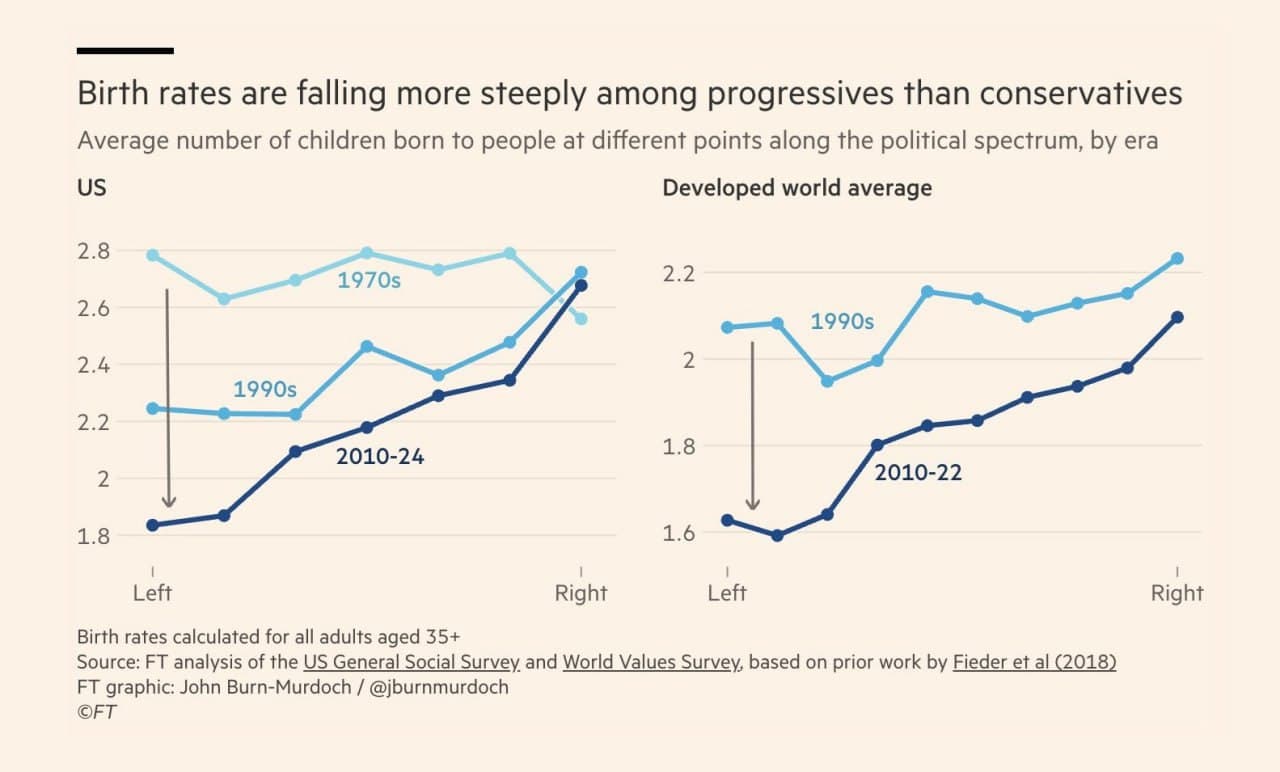Fertility rates among left-leaning populations have dramatically declined in recent years, raising alarms among demographers and policymakers. Data from 2024 indicates that the average number of children born to leftists has fallen significantly, contrasting sharply with the trends observed in the 1970s when leftists had nearly three children on average.
The shift in reproductive behavior has led to a stark decrease in birth rates among this demographic, with many attributing the decline to changing social values and economic factors. Experts point out that this trend could have long-term implications for societal structures and economic stability as populations age and workforce numbers dwindle.
Historically, leftists were known for their higher fertility rates compared to right-leaning individuals. However, as societal norms evolve, the current figures suggest a stark reversal. This decline comes at a time when other nations are also grappling with similar demographic challenges, as highlighted by recent developments in global politics that may affect population policies.
As this trend continues, analysts warn that if left-leaning populations do not adjust their family planning attitudes, it could exacerbate existing demographic challenges, leading to further imbalances in the global population landscape.






![[Video] Coast Guard sniper takes out narco-boat in Eastern Pacific](/_next/image?url=%2Fapi%2Fimage%2Fthumbnails%2Fthumbnail-1765029104101-04awi-thumbnail.jpg&w=3840&q=75)